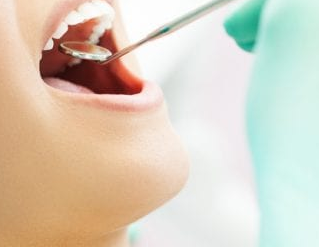Palatine Rugae Definition, Function, Pain, Swollen
What is Palatine Rugae?
The hard palate of a human mouth features ridges or folds of tissue known as rugae. They are uneven, asymmetrical, and different in size and shape from person to person. Palate rugae, which grow throughout embryonic development, are thought to improve speech output and food processing by expanding the hard palate's surface area. They also aid in preventing food from escaping the mouth while being chewed and swallowed. Palatine rugae, which are distinctive to each person, are often utilized in forensic dentistry to positively identify bodies.
According to studies, variations in tooth development are related to the morphology of the palatal rugae. According to research on the western Indian population, males and females have distinct palatal rugae, both in terms of structure and size. Another study that involved kids between the ages of 5 to 15 revealed that there are differences in the quantity, length, and appearance of palatal rugae depending on age.
In conclusion, they serve as an effective means of establishing identity through discrimination because they are both permanent and particular to each individual. Due to their function as reliable landmarks, palatine rugae can also be crucial in clinical dentistry. The shape, size, quantity, length, and shape of palatal rugae vary between populations, according to research.

Definition
The palatine rugae are ridges that can be found in the front region of the palatal mucosa, on each side of the medial palatal raphae, and behind the incisive papilla. They are fully developed at birth and are exclusive to each individual, making them valuable for distinguishing one person from another for the purposes of identity establishment through discrimination.
Function
Palatine rugae are tissue ridges or folds that can be noticed on the mouth's hard palate. There are a number of hypothesized uses for the palatine rugae, however, their precise function is not yet fully understood:
Palatine rugae may improve the ability to grasp and handle food during the chewing and swallowing processes, especially when the food is dry or sticky.
While the palatine rugae are packed with nerve endings, it is possible that they provide information about the feel, warmth, and flavor of food.
Palatine rugae may help with the creation of some vocalizations, especially those that involve making contact between the tongue and the hard palate.
Those who wear dentures may find that the palatine rugae improve fit and reduce mobility.
Pain
When the folds in the roof of the mouth, called the palatine rugae, become irritated or inflamed, they can be quite painful to function while eating. Trauma to the roof of the mouth, scrapes, scratches, viruses, stress, immunological disorders, burns, canker sores, and dehydration may all contribute to this discomfort.
Swollen
The ridges or folds of tissue on the hard palate of the mouth, known as the palatine rugae, can swell for a variety of causes.
Inflammation or irritation from oral injuries, such as burns, bites, or other trauma, is a typical cause of palatine rugae swelling. Hence, the affected area may experience brief swelling and soreness.
A food or medicine allergy, which can result in throat and mouth swelling, is another potential reason for the palatine rugae to swell.
A more serious medical problem, such as oral cancer or an immunological issue, may occasionally show symptoms, including swelling of the palatine rugae.
It's crucial to see a dentist or doctor if you have swelling in your palatine rugae in order to identify the source and get the right care. The treatment may consist of avoiding irritants, using medicine to reduce inflammation, or treating underlying medical issues.
 Reviewed by Simon Albert
on
March 13, 2023
Rating:
Reviewed by Simon Albert
on
March 13, 2023
Rating:











